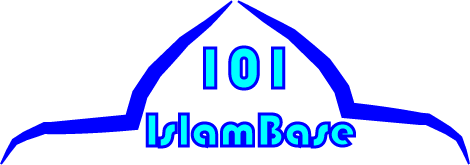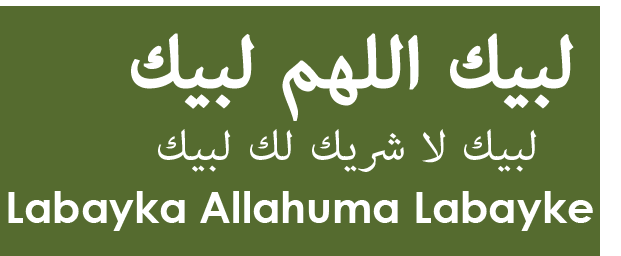What is Hajj (Pilgrimage to Mecca)?
Labyka Allahuma Labayke, Labayka La Shareek Laka Labayke, Ina Al-Hamda wa Ne’amta Laka wal Mulk, La Shareek Lak. In English: “Here I am O Allah, here I am. Here I am, You have no partner, here I am. Indeed all praise, grace and sovereignty belong to You. You have no partner”. These are the words chanted by the millions of Muslims who go to fulfill their Pilgrimage to Mecca. Hajj is a unique pillar of Islam that brings Muslims from all corners of the world to the House of Allah (Al Ka’aba) in Mecca and other Holy sites, which are all located in Saudi Arabia. The pilgrimage to Mecca practice has been completed by millions of Muslims on a yearly basis for more than 1400 years. It’s done based on a Lunar/Hijri calendar, in the month of Dhu Al-Hijjah and that is around 2 months after Ramadan.
Purpose of the Pilgrimage to Mecca?
If you watch the hujaj (pilgrims) closely, you will notice that Hajj Pilgrimage represents equality and unity. All persons performing Hajj dress in the same white clothes and are standing side by side with no distinctions of their age, race, color, status, etc. Also, the hujaj are there for one common goal and that is to worship the One God and to seek His mercy/forgiveness.
Prophet Abraham (PBUH) and Hajj Rituals
As you research the origins of the Pilgrimage to Mecca, you will realize that most of the Hajj rituals and steps are actually a replication of acts performed by the Prophet Abraham (PBUH) and his family: his second wife Hajar and his son, Prophet Ishmael. The Ka’aba was rebuilt by Abraham and Ishmael as mentioned in chapter Al-Baqara, verse 127: “And when Abraham was raising the foundation of the house and (with him) Ishmael; Our Lord, accept (rebuilding the Ka’aba) from us. Indeed you are the Hearing, the Knowing”. Hajar was the first to run between the mountains of Safa and Marwa when she was looking for water/food for her son Ishmael. Also, they were the first to drink from the Holy Zam Zam water that was a grace and blessing from Allah to them in Mecca. The sacrifice of animals in the Pilgrimage and on the days of Eid Al-Adha is also a symbolism taken from prophet Abraham (PBUH). Surprisingly, the people of the book (Jews and Christians) who firmly believe in Abraham as the father of the prophets do not follow or exercise any of his rituals.
Rules of Hajj Pillar
As a Muslim, you have to complete your Hajj pillar only once in your lifetime. The exceptions for not going to Hajj are: 1) If you are not able to afford it, 2) If you are physically unable to fulfill the practices of Hajj. So if you are in debt, you are not allowed to go until you pay off all of your debts. If you are physically incapable but can afford it, you can send someone else on your behalf to complete the Hajj for you (as long as they have completed their own Hajj first). For example, I have never my Pilgrimage to Mecca because I don’t have the money to do so and I am legally blind, so unless I get a personal guide, it will be difficult. Regardless, you must make the intention to fulfill your Hajj even if all doors are blocked in your way because this is your duty as a Muslim and who knows, Allah may open one or all doors for you.
How Hajj is Performed? (Hajj Steps)
The first Hajj step usually starts on the 8th of Dhu Al-Hijjah and ends on the 13th (6 days). When you are travelling to Saudi Arabia for Hajj, depending on where you are coming from, there will be a Meeqat (different destination points) where you must put on the white Ehram clothes (2 pieces of clothes/towels). The first place you go to start the pilgrimage is the village of Mena and you spend the night over there.
Day of Arafa
On the 9th of Dhu Al-Hijjah after praying fajr, you go to the mountain/area known as Arafa and make dua’a to Allah (verbal prayers) until the sunset. The day of Arafa is your golden opportunity to ask Allah for whatever you want and to seek forgiveness for all of your sins. You must try to be in a state of reverence and submission to Allah and be sincere while making your Dua’a. InshAllah (if Allah wills), you will become purified and free of sins as if it’s the day you were born. The prophet Mohammed (PBUH) said: “Hajj is Arafa”, meaning Hajj is not complete without Arafa, so this is the most important part of the pilgrimage. Also, Arafa day (9th of Dhu Al-Hijjah) is the best (holy) day of the year in Islam. All Muslims who are not participating in Hajj usually fast on this day as it is the sunnah (tradition) of the prophet (PBUH). The hujaj (pilgrims) then go to Muzdalefa area on the evening of that day; they do their evening and night prayers and then go to sleep.
Day of Eid Al-Adha
On the following day (10th of Dhu Al-Hijjah) is Eid Al-Adha (celebration of the Sacrifice), which is the second holiday of the year celebrated by Muslims. As a ritual, Muslims slaughter animals and distribute the meat to their families, friends and to the poor and needy. Also, on this day the Hujaj leave Muzdalefa and head toward the Ka’aba in Mecca.
When the Hujaj reach Masjid Al-Haram (where the Ka’aba is), the first thing they do is the tawaf. Tawaf means walking around the Ka’aba 7 times. The energy in the atmosphere surrounding the Ka’aba is very unique and it is felt while performing tawaf. This has been mentioned by many Muslims who have been to the Ka’aba. After tawaf, the Hujaj go to perform Al-Sa’ay bayn Al-Safa wa Al-Marwa. This is the practice I mentioned earlier that symbolizes Hajar’s actions while searching for food/water. The Hujaj jog/run between the mountain of Safa and mountain of Marwa. After drinking Zam Zam water and having the great experience of being present in the House of God, the Hujaj go back to the first starting point of the pilgrimage: Mena.
End of the Hajj Pilgrimage
Some scholars say the reason for going back to that first point from where the Hujaj started is to display that they started as sinful people and returned purified. At this point, the Hujaj get to practice the stoning of shaytan (Satan) which is a symbolism of what prophet Abraham (PBUH) did when Satan tried to persuade him to disobey Allah. This is usually done in a place called Jamarat. Hujaj get to throw 7 stones/pebbles at the big Jamarah (wall). They also get the chance to slaughter an animal as a symbolism of prophet Abraham’s (PBUH) sacrifice. And finally, Hujaj are required to cut or shave their heads and take off their Ehram clothes. I advise the men to shave their head as the prophet Mohammed (PBUH) did in order to get higher rewards than just a trim. On the 11th, 12th and 13th of Dhu Al-Hijjah, the pilgrims stay in Mena and they get to rest, eat/drink, pray and remember Allah. Also they repeat the process of stoning of Satan but this time in a different Jamarah (wall).
Performing Umrah
There is a voluntary sunnah called Umrah which consists of tawaf, the run between Safa and Marwa and cutting/shaving of hair on the head. This sunnah is usually anytime during the year and it will only take a day or less to complete. It is a practice that has high rewards from Allah and anyone can perform it since the rules of Hajj do not apply to Umrah.
I hope that you enjoyed reading about the Pilgrimage to Mecca and I pray to Allah to grant us the health and wealth so we are able to fulfill our Hajj and Umrah.


